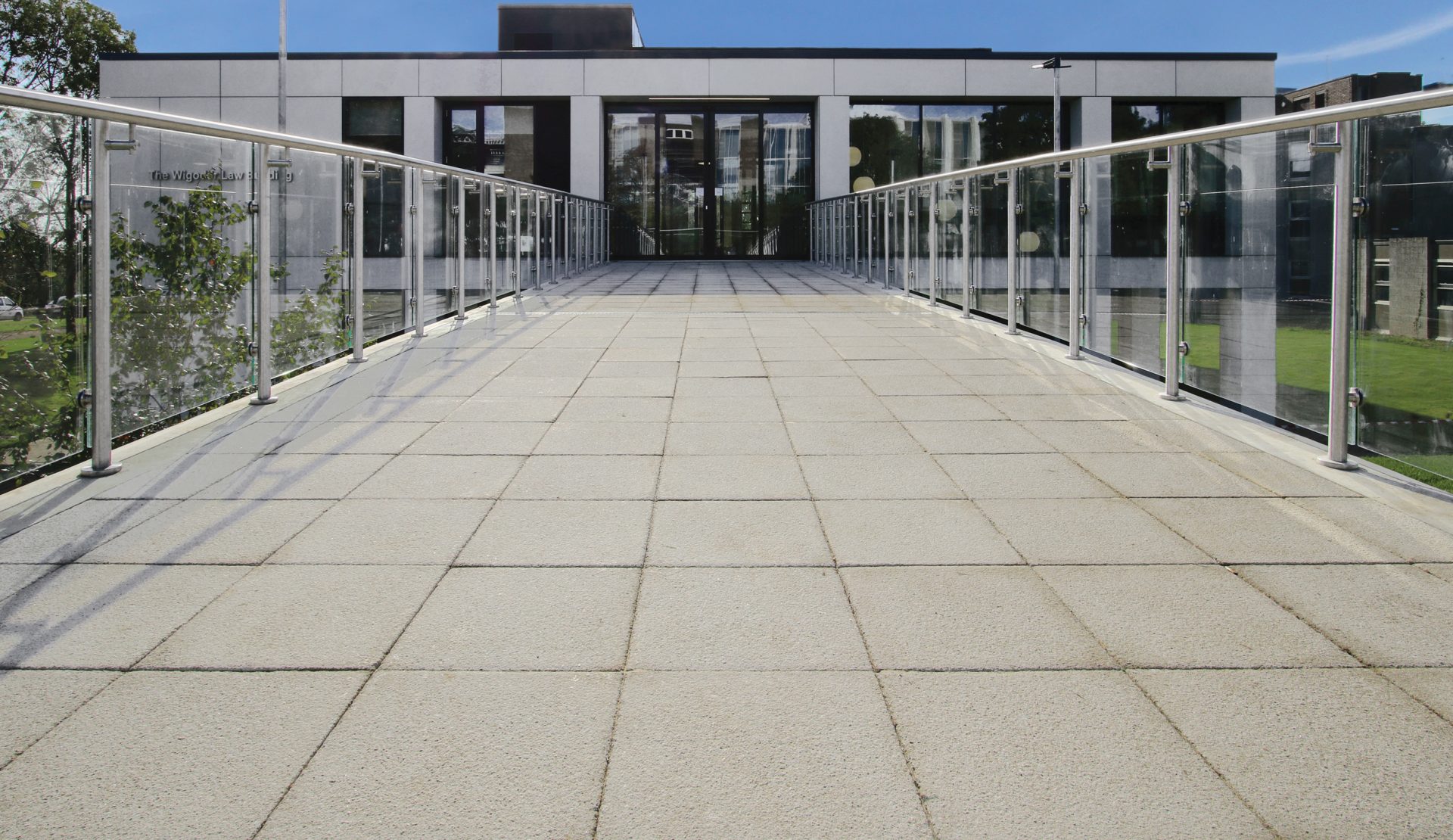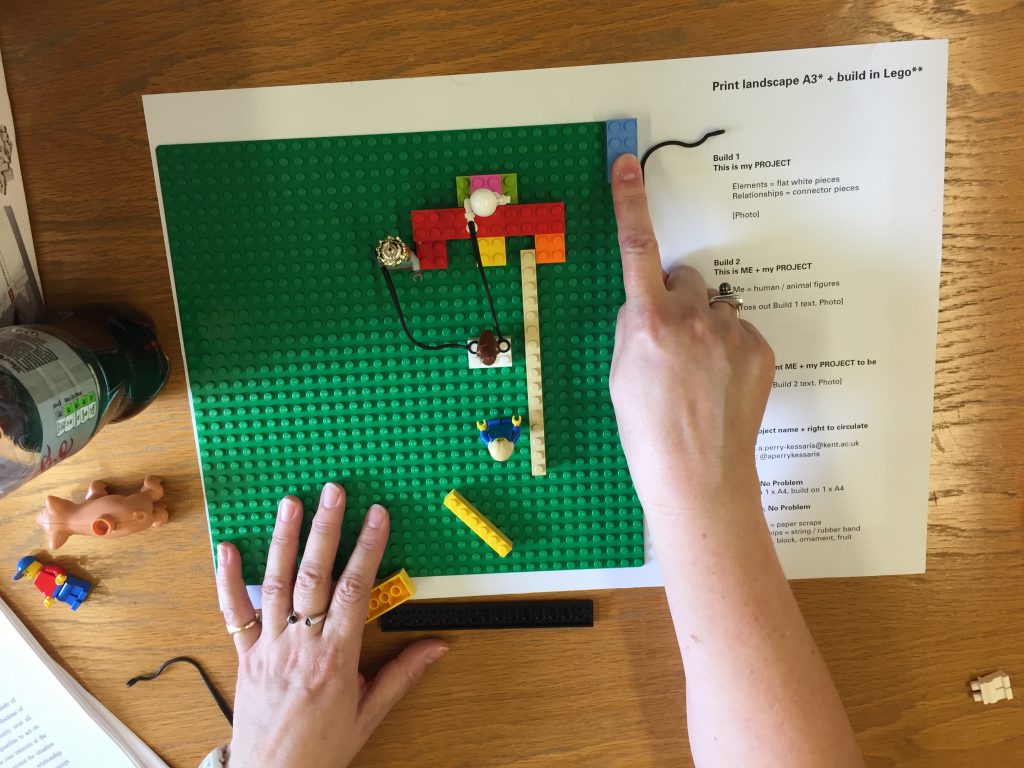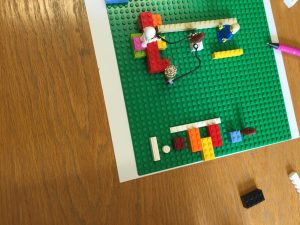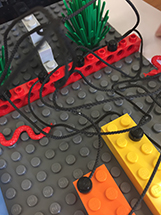Academic staff at Kent Law School rediscovered the joy of playing with lego in a workshop exploring how the process of making 3D models can help with the visualisation of complex projects and ideas.
Law School Professor Amanda Perry-Kessaris, who led the innovative session, said: ‘It is commonly reported that we remember just 10 percent of what we hear and 20 percent of what we read, but 80 percent of what we see and do; and that over 80 percent of the information we absorb is visual.
‘Let’s say I am facing a problem in my current research/administration/teaching project, and I want to get the advice of my colleagues. I can build a model for my colleagues of where my project is now, explaining what each piece represents and how it relates to the other pieces. The building process, including the selection of the pieces and where to put them, will force me to think very precisely about my project, but in terms that are still accessible to others. I learn new things about how my project fits together, and I offer a shared point of reference or vocabulary to my colleagues. After some discussion I might be in a position build another model that is closer to where I want my project to be. I may or may not actually get there. But we will all have used more of that 80 percent.’
In the first of a series of videos she is making from the session, Professor Perry-Kessaris filmed Associate Lecturer Joanne Pearman thinking through the relationships between different aspects of a particular project: https://vimeo.com/174647035
PhD student Karen Widess, who also participated in the workshop said: ‘I found this process to be creative and fun and oddly comforting. It made me stand back and look at my work more objectively – perhaps that’s why I found it calming.’
Karen later shared a photograph of her Lego model with colleagues and friends via social media, generating an unexpected discussion of the merits of the model making experiment with people who hadn’t had the benefit of participating. Describing her model (pictured above), Karen explained: ‘The Lego blocks on the left are the parts of my thesis – they are at various stages, so staggered, but at least I pretty much know what they are. The big yellow bit on the left is the completed project. All the other stuff in between – the connections – represents my uncertainty about how to get over the bridge from left to right. And I’m the cat stuck up the pole gathering up the courage to jump. Cool, huh?’ In response, comments included: “This is awesome but what does it mean?”; “This is really creative. What a great idea!”; “Very cool!”; and “How very forward thinking.”
Professor Perry-Kessaris will be using Lego again in a plenary session entitled ‘Visualising Law and Time’ during the final international conference of the Law School’s Regulating Time network in September. The three-year network, funded by the UK’s Arts & Humanities Research Council, comprises an interdisciplinary group of scholars interested in the relationship between law and dominant concepts of time. It is co-ordinated by Kent Law School Reader in Law Dr Emily Grabham and Dr Sian Beynon-Jones, a Lecturer in Sociology at the University of York.
Dr Grabham said: ‘Amanda’s methods have been extremely helpful for me when thinking about how to conceptualise the relationship between law, regulation and time. We’re very excited about her plenary because it will be both conceptually rich and hands-on. It will launch the conference in a really engaged way; the Lego will help challenge the way participants might think about law and time and enable them to try out new ideas.’
Professor Perry-Kessaris enjoys exploring the potential of visual communication at every stage of the legal research process. Examples of her work with graphic design can be found on her blog, Approaching the econo-socio-legal, and on her Vimeo page. She is also the academic coordinator for a collaborative project called Thinking into | about practice which asks academics and practitioners to use images and text to reflect upon their experience in the field of law and development.





